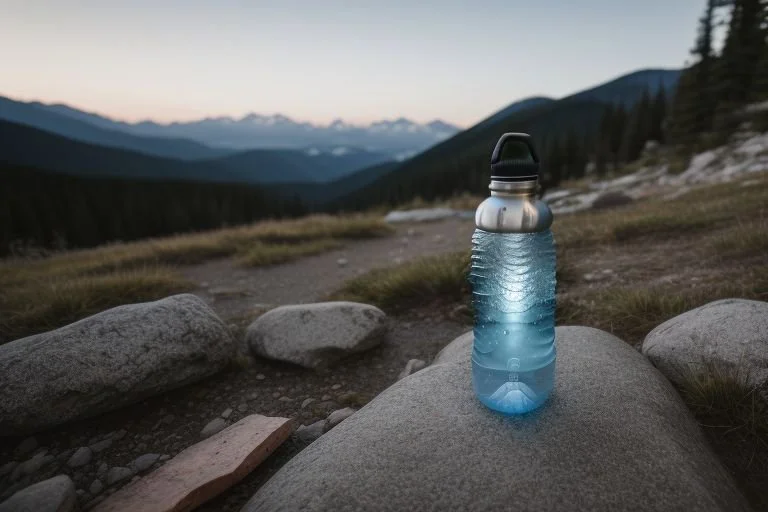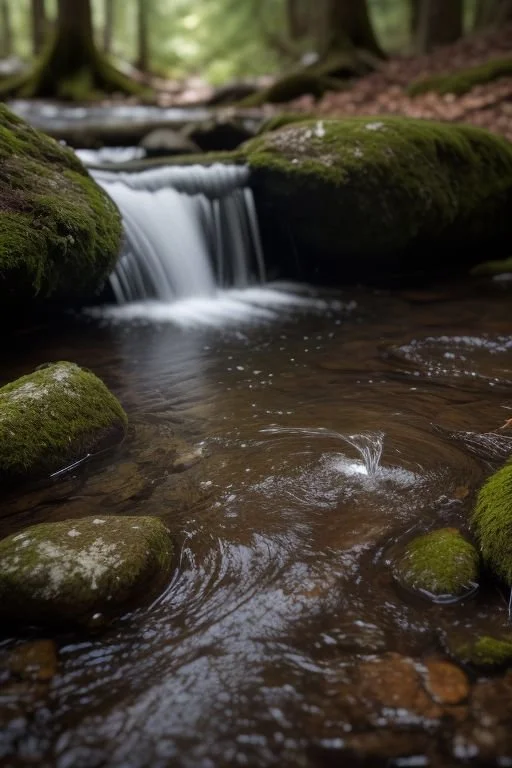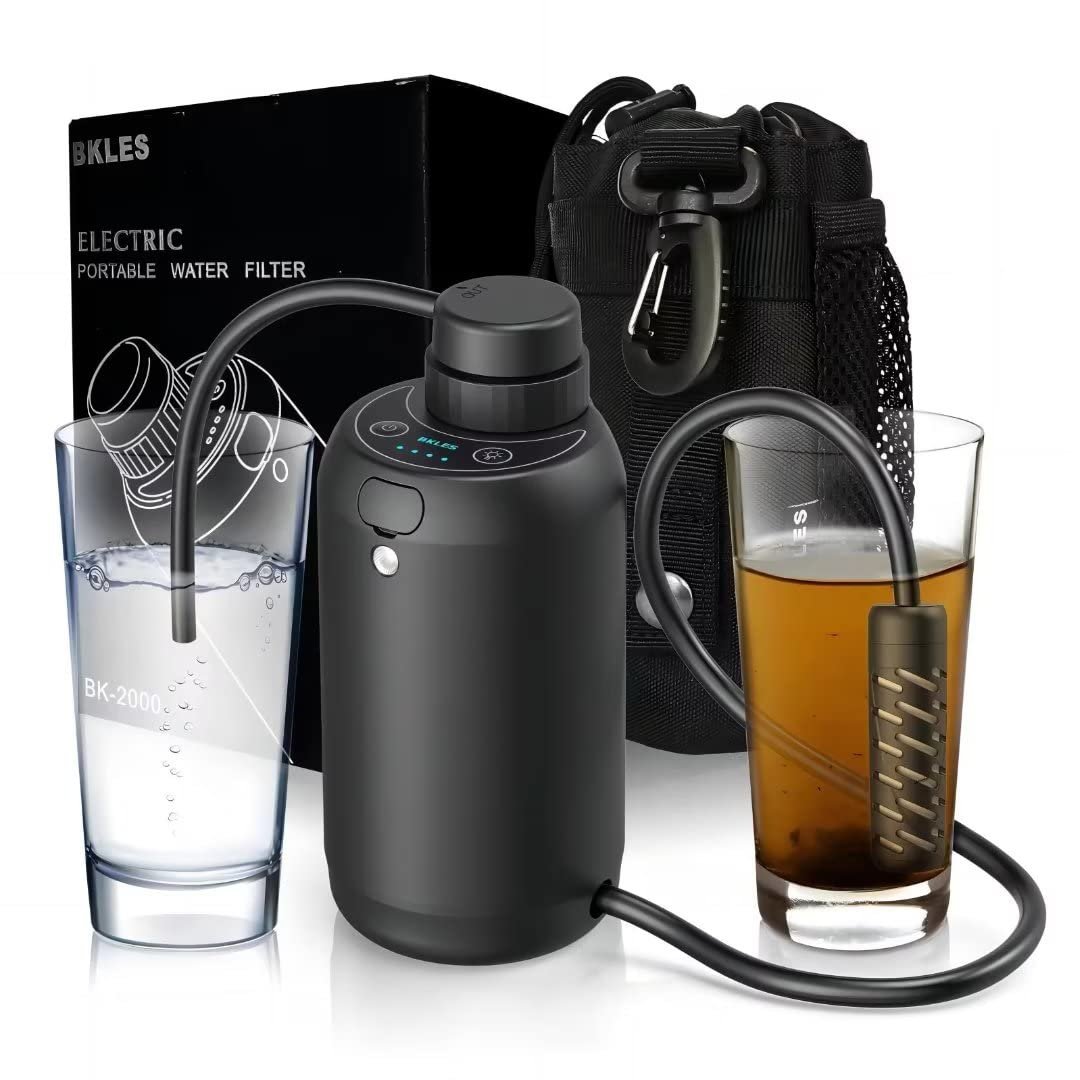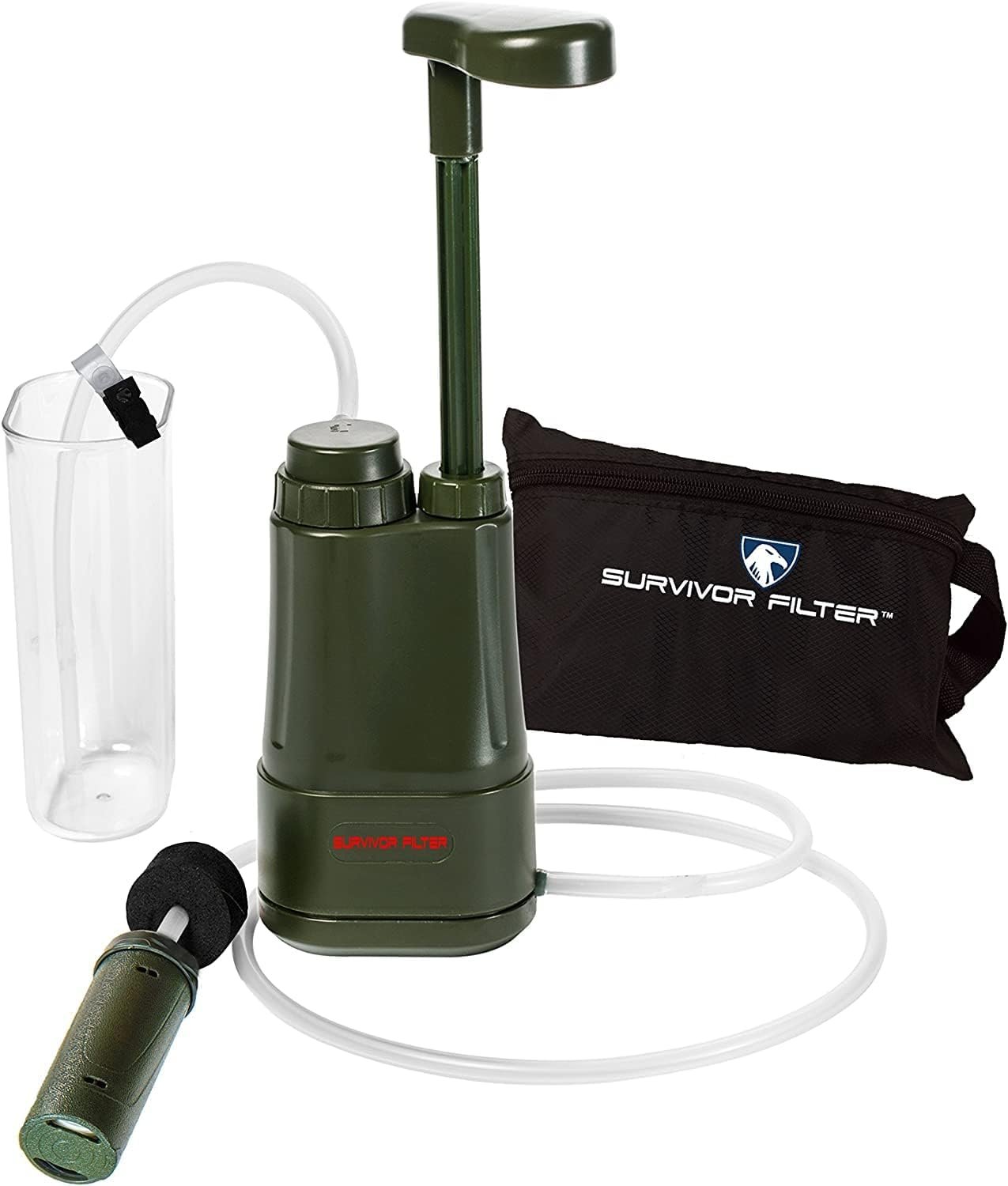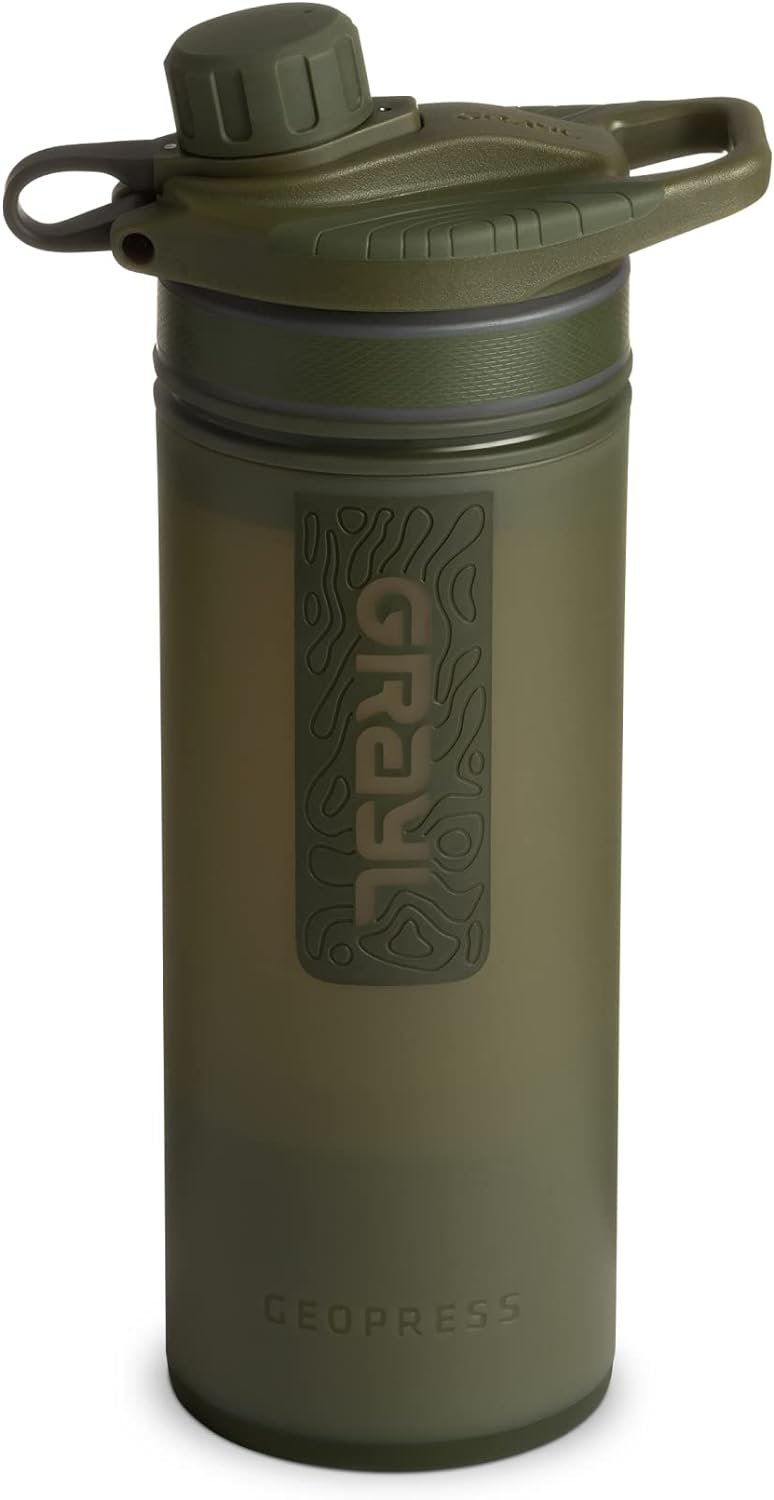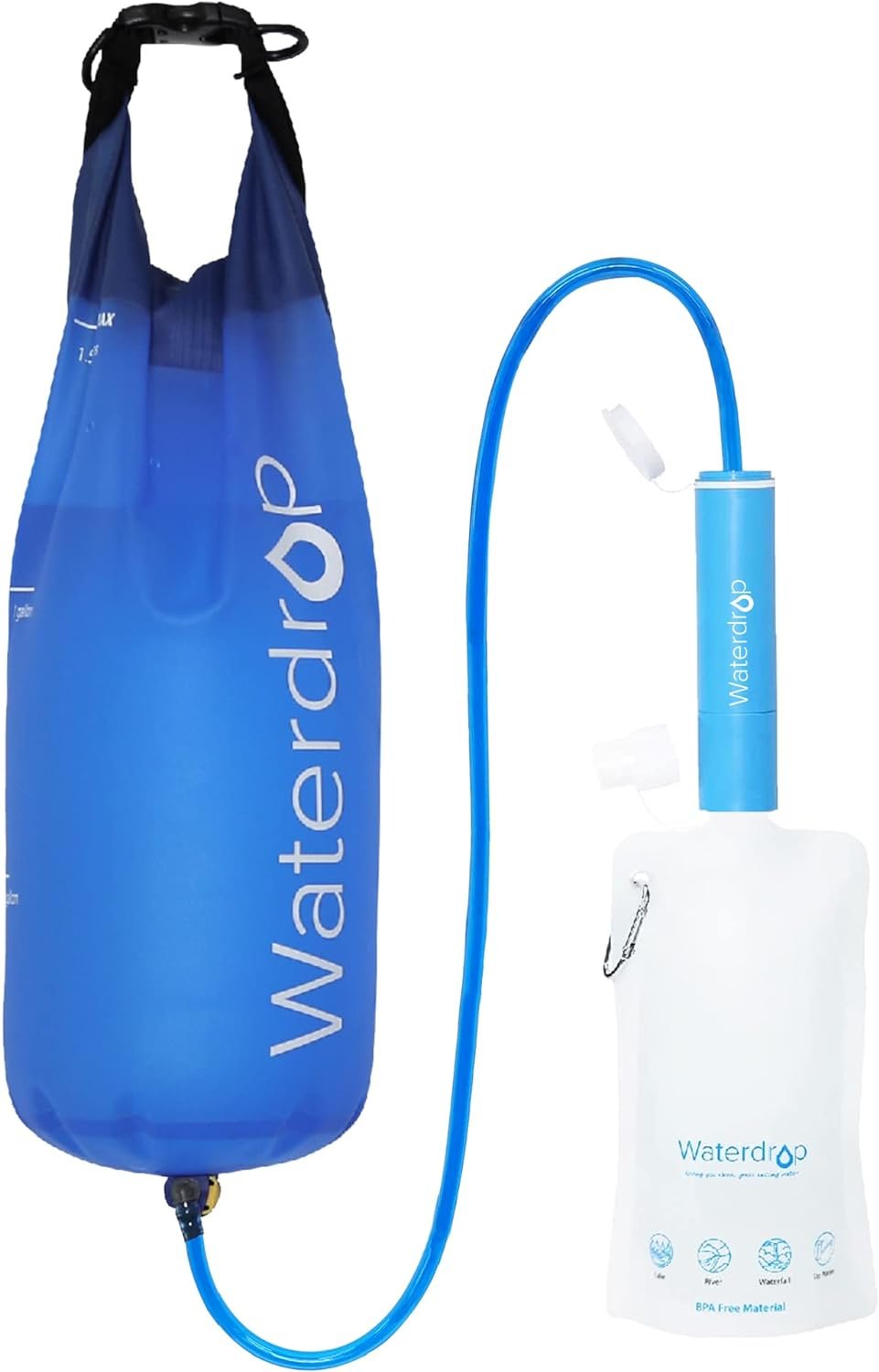From Stream to Bottle:
How to Purify Water in the Great
Outdoors
Clean water is essential for survival, and this is especially true for outdoor enthusiasts who spend their time exploring the great outdoors. Whether it's hiking through rugged mountains, camping in remote forests, or embarking on a long-distance backpacking trip, access to clean water is crucial for maintaining good health and well-being. However, the wild can be a treacherous place, and drinking untreated water can pose serious risks. In this article, we will explore the significance of clean water for outdoor enthusiasts and delve into the dangers of consuming untreated water in the wild.
Understanding Water Sources in the Wild
When venturing into the wilderness, it is important to be able to identify potential water sources. These sources can include rivers, streams, lakes, and even natural springs. However, not all water sources are safe to drink from. Evaluating the quality of water sources is essential to ensure that it is free from harmful bacteria, parasites, and other contaminants. This can be done by observing the clarity of the water, checking for any signs of pollution or animal activity nearby, and using filtration or purification methods to further ensure its safety.
The Risks of Drinking Untreated Water
Drinking untreated water in the wild can lead to a range of health hazards. Contaminated water can contain harmful bacteria such as E.coli and Salmonella, as well as parasites like Giardia and Cryptosporidium. These microorganisms can cause severe gastrointestinal illnesses, leading to symptoms such as diarrhea, vomiting, and dehydration. In some cases, these illnesses can be life-threatening, especially if medical help is not readily available. Therefore, it is crucial to prioritize water purification when consuming water from natural sources in the outdoors.
The Benefits of Purifying Water in the Outdoors
Purifying water in the wild offers numerous advantages for outdoor enthusiasts. Firstly, it ensures the removal of harmful microorganisms, making the water safe to drink and reducing the risk of waterborne illnesses. Additionally, purifying water can improve its taste and odor, enhancing the overall drinking experience. Moreover, by purifying water in the outdoors, individuals can reduce their reliance on single-use plastic bottles, contributing to a more sustainable and eco-friendly approach to outdoor adventures. There are various methods of water purification available, each with its own benefits and limitations.
Boiling water is one of the simplest and most effective methods of water purification in the outdoors. To boil water, one needs a heat source such as a campfire or portable stove. By bringing the water to a rolling boil for at least one minute (or three minutes at higher altitudes), harmful microorganisms are killed, making the water safe to drink. Boiling water is particularly useful when other purification methods are not available or practical. However, it is important to note that boiling does not remove chemical contaminants or sediment from the water.
Using Water Filters: How They Work and Which Ones to
Choose
Chemical Water Treatment: Pros and Cons
Chemical water treatments offer a lightweight and convenient solution for purifying water in the outdoors. These treatments typically come in the form of tablets or drops that contain chemicals such as chlorine dioxide or iodine. When added to water, these chemicals kill bacteria, viruses, and other microorganisms. Chemical treatments are effective against a wide range of contaminants and are easy to use. However, they may leave an unpleasant taste or odor in the water, and some individuals may be sensitive to the chemicals used. It is also important to follow the instructions provided and allow sufficient contact time for the treatment to work effectively.
UV Water Purification: An Alternative to Chemicals
UV water purification is a relatively new method of water treatment that has gained popularity among outdoor enthusiasts. This method utilizes ultraviolet light to destroy the DNA of microorganisms, rendering them unable to reproduce and causing their death. UV purifiers are compact, lightweight, and easy to use. They are particularly effective against bacteria, viruses, and protozoa. However, UV purification requires batteries or a power source to operate, and it may not be as effective against certain types of parasites or chemical contaminants.
Solar Water Disinfection: Harnessing the Power of the Sun
Solar water disinfection, also known as SODIS, is a low-cost and environmentally friendly method of purifying water in the outdoors. This method utilizes sunlight to kill harmful microorganisms in plastic bottles or containers. To use this method, fill a clear plastic bottle with water and place it in direct sunlight for at least six hours (or two days if the weather is cloudy). The heat and UV radiation from the sun will destroy the microorganisms present in the water, making it safe to drink. Solar water disinfection is particularly useful in areas where other purification methods are not available or practical.
Portable Water Purification Systems: A Comprehensive
Solution
For those seeking a comprehensive solution for water purification in the outdoors, portable water purification systems offer a convenient option. These systems typically combine multiple purification methods such as filtration, chemical treatment, and UV purification into a single device. Portable water purification systems are designed to be lightweight, compact, and easy to use, making them ideal for backpacking, camping, and other outdoor activities. When choosing a portable water purification system, factors such as weight, size, and the specific purification methods used should be considered.
DIY Water Purification: Making Your Own Filter and
Disinfectant
In situations where commercial water purification methods are not available, it is possible to make your own filter and disinfectant in the outdoors. DIY water filters can be constructed using materials such as sand, gravel, and activated charcoal to remove sediment and contaminants from the water. Disinfectants can be made using household bleach or iodine tablets. While DIY methods may not be as effective or reliable as commercial purification methods, they can provide a temporary solution in emergency situations.
Tips for Collecting and Storing Water in the Outdoors
Collecting and storing water properly is essential for ensuring a safe and reliable water supply in the outdoors. When collecting water from natural sources, it is important to choose clean and flowing water whenever possible. Avoid stagnant or polluted water sources that may contain higher levels of contaminants. It is also advisable to carry multiple containers for water storage, as well as a means of purifying the collected water. Properly sealing containers and storing them in a cool and dark place can help prevent the growth of bacteria or algae.
Hydration Strategies for Hiking and Camping
Staying hydrated is crucial when engaging in outdoor activities such as hiking and camping. Dehydration can lead to fatigue, dizziness, and other symptoms that can impair performance and enjoyment of the experience. To stay hydrated, it is important to drink regularly throughout the day, even if you do not feel thirsty. Carrying a reusable water bottle or hydration bladder can help ensure easy access to clean water at all times. Additionally, consuming electrolyte-rich foods or drinks can help replenish essential minerals lost through sweating.
The Importance of Water Purification in the Great Outdoors
In conclusion, clean water is of utmost importance for outdoor enthusiasts. Drinking untreated water in the wild can pose serious health risks due to the presence of harmful microorganisms and contaminants. Therefore, it is essential to prioritize water purification when consuming water from natural sources in the outdoors. There are various methods of water purification available, each with its own benefits and limitations. Whether it's boiling water, using water filters, employing chemical treatments, harnessing UV or solar purification methods, or opting for portable water purification systems, outdoor enthusiasts have a range of options to ensure access to safe and clean drinking water during their adventures. By understanding the risks associated with untreated water and adopting proper hydration strategies, outdoor enthusiasts can enjoy their time in the great outdoors while staying healthy and hydrated.

